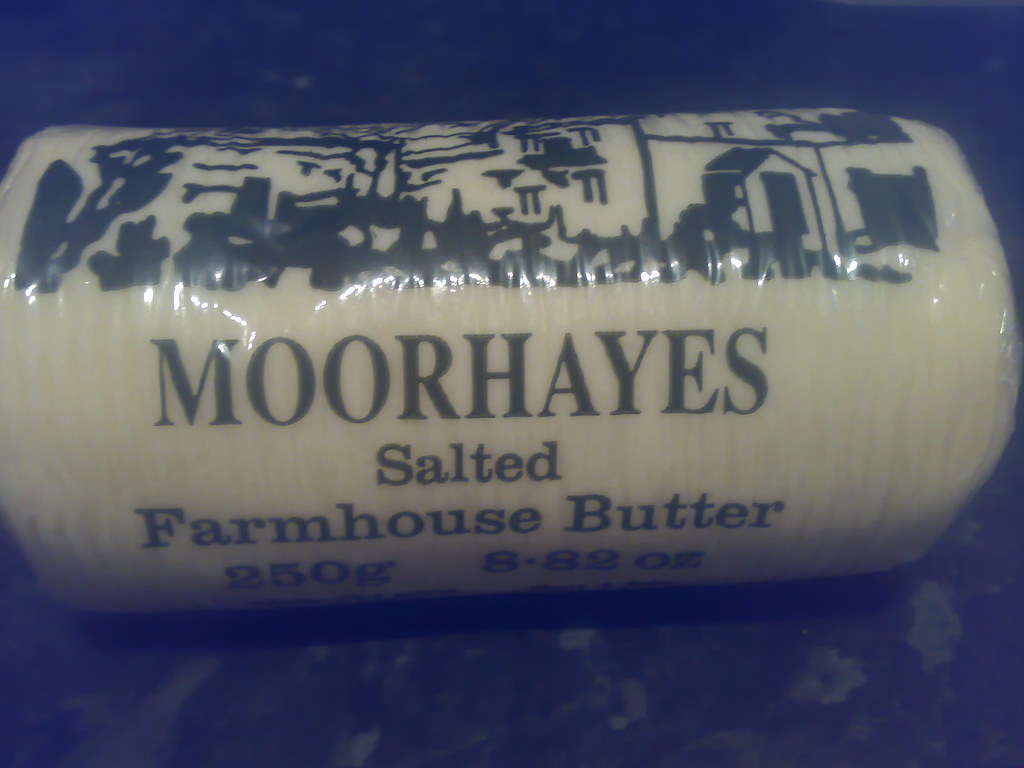
My grandmother, continually angry at being forbidden the high cholesterol of full fat dairy produce, reminisces about the days in the 1950s when her farming household consumed two pounds of butter a day. “One for your grandfather and one for the rest of the men.”
For the last forty years or so of his life, she never spoke to and rarely of my grandfather, so this snippet was memorable. She doesn’t know, or probably care, that he continued to consume butter in gargantuan amounts, only that she is forbidden to do so. Perhaps that is why she has outlived him.
Although falling short of Grandpa David’s heroic standards, I have inherited the family love of solid churned cream. Spread thickly on bread or used to fry almost anything, even melted into egg yolks to form hollandaise sauce, butter is one of my favourite food stuffs.
This has been the case for many years, but until recently I was under the impression that the only decision to be made about butter was ‘salted or unsalted.’ It is only recently that I have come to appreciate how much it can vary. My first inkling of this variability came at a point when I was trying to economise, and thought that one easy way was to buy cheaper butter from New Zealand in place of the heavily subsidized but still more expensive Kerrygold that I had been in the patriotic habit of buying.
This change in buying behaviour was also driven by a brief flirtation with economics, a friend having ranted to me about the iniquities of the European common agricultural policy. I did my bit for free market butter economics for a couple of weeks but was soon driven back to the protectionist stuff that did not go rancid so quickly.
This may be simply because it is more highly salted, as is my taste, but the underlying taste is also sweeter to my palate.
Having worked out this difference, it became clear that it might easily be worth spending money on expensive butters to find the best, or those bests that are most appropriate to different needs.
Since then I have wasted much money, raised my own cholesterol level and tasted many different kinds of butter. I know that it can vary in colour, texture, saltiness, firmness when refrigerated or not, keeping quality and sweetness. It can be made with fresh or fermented cream, or even the whey from cheese-making. Contrary to expectations, a higher water content is often a good sign, although it’s not clear whether that is because it associated with artisanal methods of churning and the higher quality ingredients that implies, or is actually a good thing in itself.
In the last few weeks I have sampled bright yellow and crystalline clotted cream butter, smoother whey butter, which is not noticeably less sweet, the familiar salty smoothness of Kerrygold (the standard Irish butter, originally produced by the Kerry Co-op and marketed internationally by one Tony O’Reilly, who went on to head multi-nationals Heinz and Waterford) and the pale sweetness of the French butter sold in Borough Market at a specialist butter stall, sliced from demi-tuns and eaten irresistibly with a London bloomer loaf.
I wouldn’t eat a pound a day of the latter, but only because I can’t afford it; my next plan is to try making pastry with it.

No comments:
Post a Comment